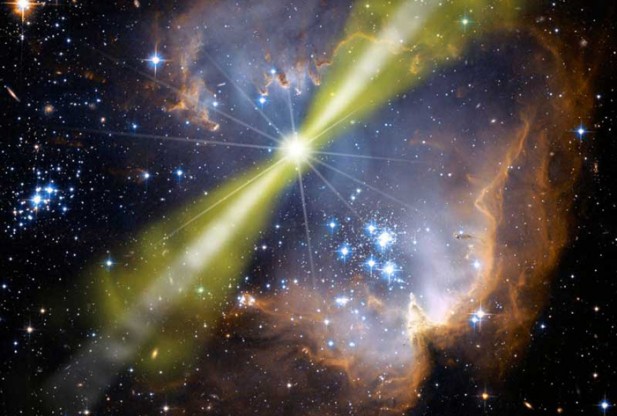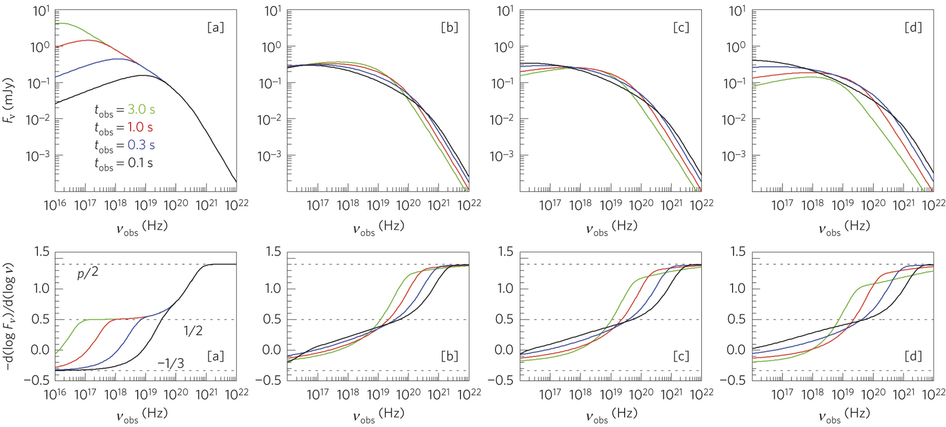

The first image above (Credit: NASA/Swift/Mary Pat Hrybyk-Keith and John Jones) shows an artist's impression of a Gamma-ray Burst (GRB), the most energetic explosion in the Universe since the Big Bang. In a recent paper published in Nature Physics (06 April 2014), Prof. Bing Zhang and I made a theoretical breakthrough in understanding the radiation mechanism of GRB prompt emission. We showed that, when the magnetic field strength B in the emitting region decreases in time, the fast-cooling synchrotron spectrum is in fact in a non-steady state and becomes significantly harder than the "standard" one, thus becoming well consistent with the observed low-energy index of GRB prompt spectra. In the first column (model [a]) of the second figure above, we first reproduced the standard spectrum assuming a constant value of B. We then showed in the numerical models [b] - [d] that the fast-cooling spectrum gets indeed harder when the B value in the region decreases in time. For details, see http://www.nature.com/nphys/journal/v10/n5/abs/nphys2932.html.
Recent Publications:
Uhm, Z. L.; Zhang, B. 2014, ApJ, 789, 39
Dynamics and Afterglow Light Curves of GRB Blast Waves Encountering a Density Bump or Void
Uhm, Z. L.; Zhang, B. 2014, Nature Physics, 10, 351
Fast Cooling Synchrotron Radiation in a Decaying Magnetic Field and GRB Emission Mechanism
Uhm, Z. L.; Zhang, B. 2014, ApJ, 780, 82
On the Non-existence of a Sharp Cooling Break in GRB Afterglow Spectra
Uhm, Z. L.; Zhang, B.; Hascoet, R.; Daigne, F.; Mochkovitch, R.; Park, I. H. 2012, ApJ, 761, 147
Dynamics and Afterglow Light Curves of GRB Blast Waves with a Long-lived Reverse Shock
Hascoet, R.; Uhm, Z. L.; Mochkovitch, R.; Daigne, F. 2011, A&A, 534, 104
Was the "naked burst" GRB 050421 really naked?
Uhm, Z. L. 2011, ApJ, 733, 86
A Semi-analytic Formulation for Relativistic Blast Waves with a Long-lived Reverse Shock
Beloborodov, A. M.; Daigne, F.; Mochkovitch, R.; Uhm, Z. L. 2011, MNRAS, 410, 2422
Is gamma-ray burst afterglow emission intrinsically anisotropic?